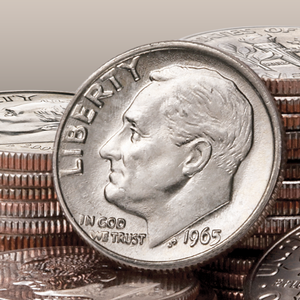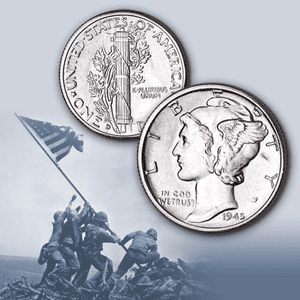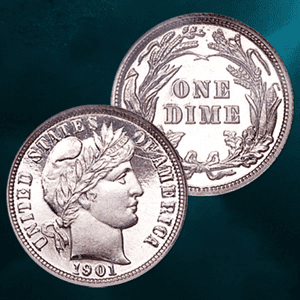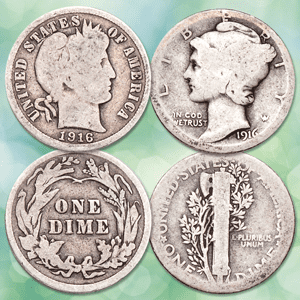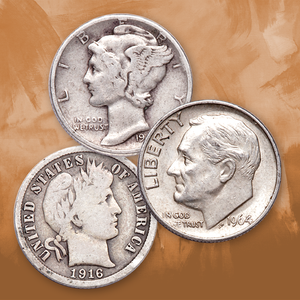US Dimes
US Dimes – small in size, big on history • Although it's the smallest US coin minted today, the US dime has an impressive history. This denomination was authorized under the Act of April 2, 1792, which established the US Mint and coinage. The first official US dimes were struck by the mint in 1796 and, for more than 220 years, they have remained a staple in American commerce! For many years, the US dime designs featured a theme that was popular on early US coinage – Lady Liberty.
Read more
Liberty on Dimes
The first design found on dimes of the US featured a bust of Liberty with her hair tied in a ribbon. These coins were issued for about a decade before making way for a new Liberty – the Capped Bust design of 1809-1837. This was followed by the 1837-1891 Liberty Seated dime, the 1892-1916 Barber dime and, finally, the 1916-1945 Mercury dime.
All US dimes have featured a reeded edge, and until 1964, the coins were, of course, silver dimes. The original US dime composition was 89% silver – this increased to 90% silver in 1837.
A new look for America's Dime
In 1945, President Franklin D. Roosevelt passed away. This revered leader had guided our nation through the Great Depression and World War II, and there were immediate calls to honor him on a US coin design. Because of his association with the March of Dimes (Roosevelt had been afflicted with polio as an adult), the dime was a natural choice on which to feature a portrait of the 32nd US president.
Today, the Roosevelt dime stands as the longest-running US dime design. Silver dimes were issued from 1946-1964. In 1965, owing to the rising cost of that precious metal, the US dime was changed to a copper-nickel clad composition.


